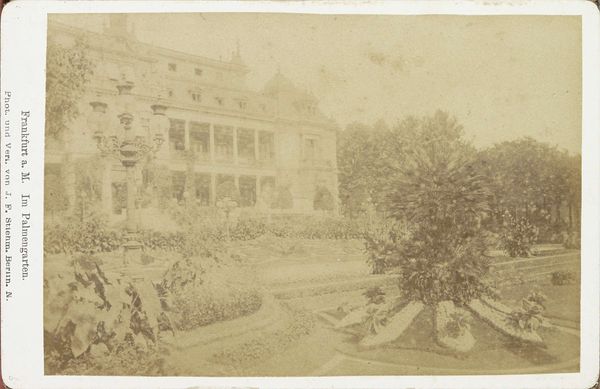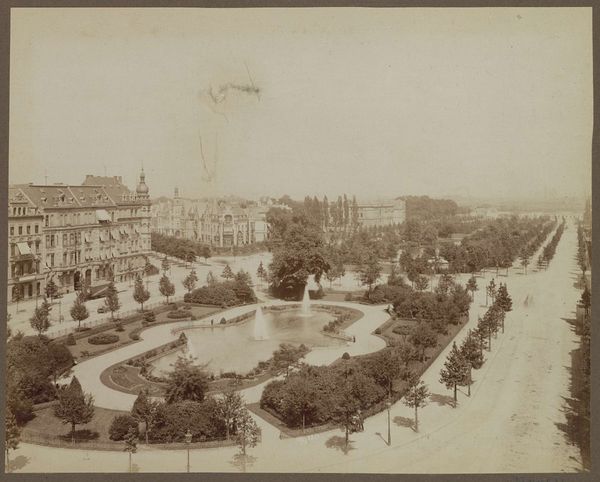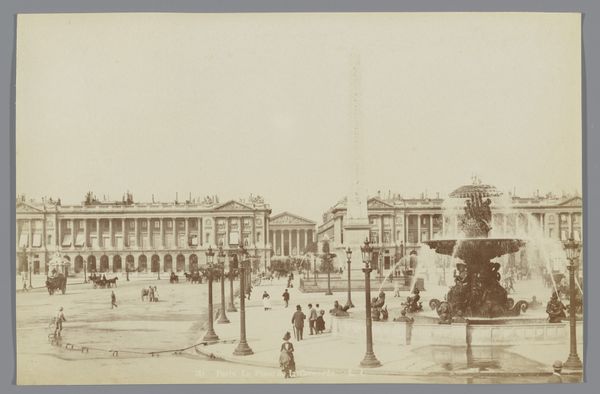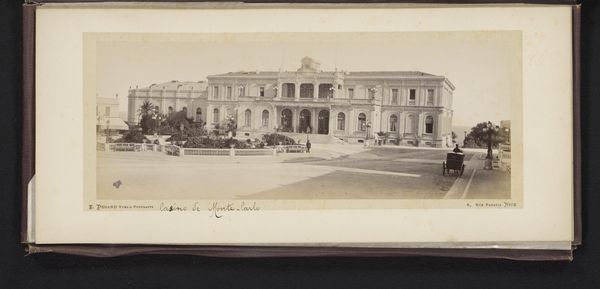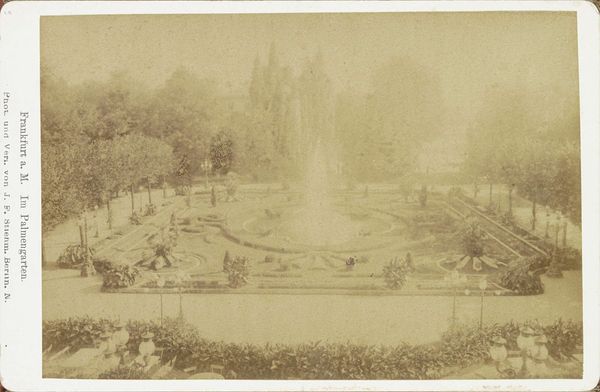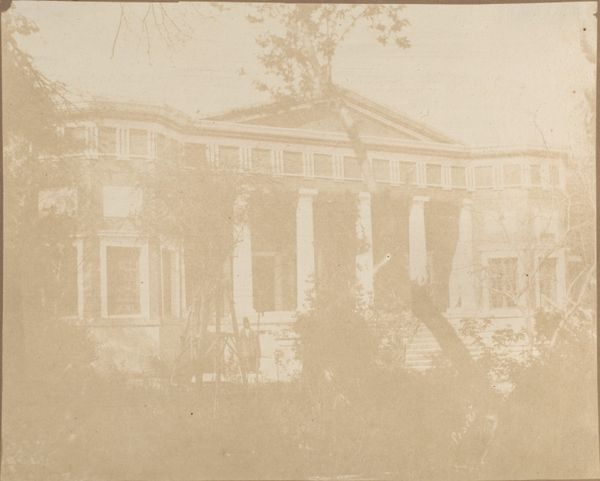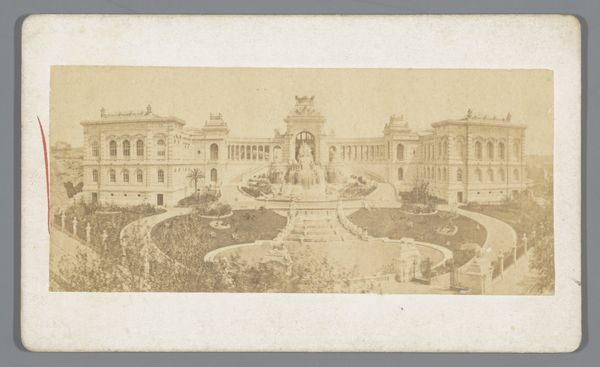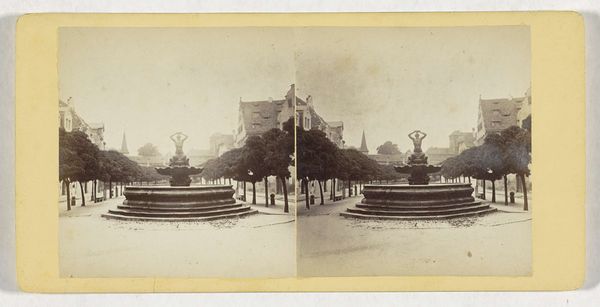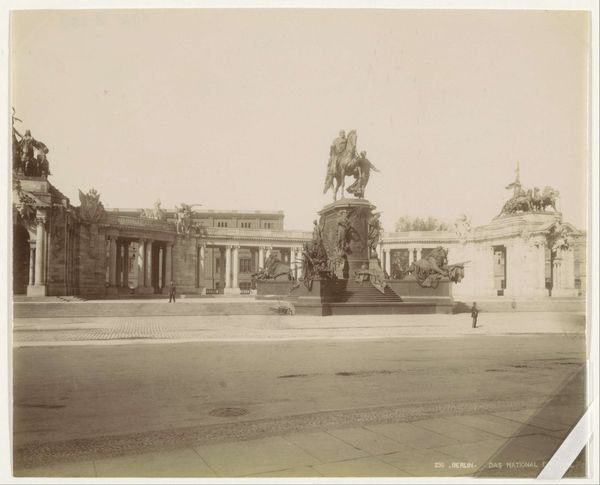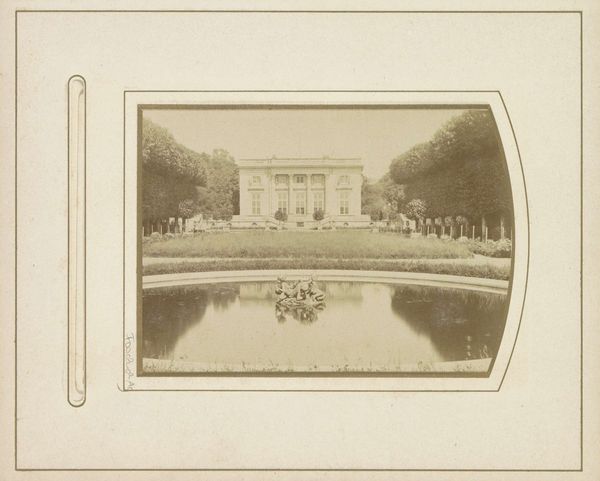
Gezicht op het Gesellschaftshaus (feestzaal) met fontein ervoor in de Palmentuin van Frankfurt after 1871
0:00
0:00
Dimensions: height 109 mm, width 168 mm
Copyright: Rijks Museum: Open Domain
Editor: Here we have "Gezicht op het Gesellschaftshaus (feestzaal) met fontein ervoor in de Palmentuin van Frankfurt," a photograph by Johann Friedrich Stiehm, taken after 1871. It's quite striking – the grand building looms over the meticulously arranged garden. I’m curious about how this meticulously ordered landscape interacts with ideas of public and private space in Frankfurt at the time. What do you see in this piece? Curator: That’s a wonderful starting point. What interests me most is precisely the ordered nature of the landscape and its relationship to the Gesellschaftshaus. These spaces weren’t just about aesthetic pleasure. They were stages upon which class, identity, and even colonial power were performed and reinforced. Think about who had access to these gardens, and who was excluded. Who was this space *really* for? Editor: That’s interesting. So the Palmentuin, with its exotic plants, wouldn't just be a park, but a representation of Frankfurt's global reach and influence? Curator: Precisely. These botanical displays reflected not just wealth, but also a specific kind of worldview rooted in exploration, acquisition, and the assertion of European dominance. And consider the function of the Gesellschaftshaus itself, a 'society house'. What societal norms are being constructed and upheld within that building? The manicured garden acts as a frame, highlighting and reinforcing these established structures. It's an carefully curated, "civilized" space in contrast to the 'wildness' being "brought back" as specimens. Editor: So, viewing it as more than just a pretty picture makes the photograph a powerful social document? Curator: Exactly. It invites us to investigate the intersections of social class, cultural representation, and even ecological exploitation. Think about where these exotic plants came from, who cultivated them, and at what cost? Considering these angles pushes us beyond surface appearances. Editor: This has definitely changed my perspective! I now see it as a complex intersection of social and political statements rather than just a pleasant landscape. Curator: And hopefully that gives us all something more to consider as we walk through it.
Comments
No comments
Be the first to comment and join the conversation on the ultimate creative platform.

